Change in Material Per Turn

This chart is based on a single playout, and gives a feel for the change in material over the course of a game.
Capture all your opponent's pieces, or render them unable to move
Men move in a straight line a number of steps equal to the adjacent friendly pieces at the start of their move. Last to move wins.
General comments:
Play: Random Setup,Combinatorial
Family: Combinatorial 2013
Mechanism(s): Capture,Movement
Components: Board
| BGG Entry | Quantum Leap |
|---|---|
| BGG Rating | 7.14286 |
| #Voters | 14 |
| SD | 1.40698 |
| BGG Weight | 2 |
| #Voters | 3 |
| Year | 2013 |
| User | Rating | Comment |
|---|---|---|
| seneca29 | N/A | astratto in tavoliere esagonale con 5 esagoni per lato (Tintas o Catchup) |
| Qwzx | 8 | |
| pecan | 7 | |
| 1974vertigo2009 | N/A | PnP - 1362 |
| Kaffedrake | 4 | Move starvation game similar to Konane but with a hex grid and move restrictions that make the game state rather difficult to read. |
| carmenpf7 | 9 | |
| fogus | 5 | |
| schwarzspecht | 8 | |
| Thesse1955 | 8 | |
| grasa_total | 7 | A board full of painfully local tactical situations that have a limited but crucial ability to affect each other. For a novice like me, the balancing rule doesn't balance much (how would I know if that position is better?) but otherwise, fun to play even when a little clueless. |
| russ | 7 | Enjoyable game of "keep moving (jumping onto enemy pieces to replace them) until you lose by not having a move", where the number of spaces a piece moves is equal to the number of friendly neighbors (so an isolated piece is immobile, at least temporarily). The movement rule feels very natural and elegant, yet not used much in other games that I'm aware of. Feels sort of like TZAAR meets Lines of Action, but not really. :) |
| Arcanio | 8 | |
| camb | 8 | Nice game. The movement mechanism is beautifully simple and fundamental but the resulting combinations are complex enough that moves get tricky to predict, which keeps things surprising. The simple intuitive strategy of keeping pieces connected in groups as much as possible keeps this potential uncertainty in check so things don't get too confusing. |
| Aspudde | 6 | |
| AndrePOR | N/A | Print & Play Edition |
| nestorgames | 9 | It's my game and I like it :) |
| jmdsplotter | 6 |
| AI | Strong Wins | Draws | Strong Losses | #Games | Strong Win% | p1 Win% | Game Length |
|---|---|---|---|---|---|---|---|
| Random | |||||||
| Grand Unified UCT(U1-T,rSel=s, secs=0.01) | 36 | 0 | 0 | 36 | 100.00 | 44.44 | 34.83 |
| Grand Unified UCT(U1-T,rSel=s, secs=0.07) | 36 | 0 | 3 | 39 | 92.31 | 56.41 | 38.77 |
| Grand Unified UCT(U1-T,rSel=s, secs=0.20) | 36 | 0 | 11 | 47 | 76.60 | 34.04 | 40.04 |
| Grand Unified UCT(U1-T,rSel=s, secs=1.48) | 36 | 0 | 8 | 44 | 81.82 | 34.09 | 39.61 |
Level of Play: Strong beats Weak 60% of the time (lower bound with 90% confidence).
Draw%, p1 win% and game length may give some indication of trends as AI strength increases; but be aware that the AI can introduce bias due to horizon effects, poor heuristics, etc.
| Size (bytes) | 24619 |
|---|---|
| Reference Size | 10577 |
| Ratio | 2.33 |
Ai Ai calculates the size of the implementation, and compares it to the Ai Ai implementation of the simplest possible game (which just fills the board). Note that this estimate may include some graphics and heuristics code as well as the game logic. See the wikipedia entry for more details.
| Playouts per second | 9769.72 (102.36µs/playout) |
|---|---|
| Reference Size | 566091.14 (1.77µs/playout) |
| Ratio (low is good) | 57.94 |
Tavener complexity: the heat generated by playing every possible instance of a game with a perfectly efficient programme. Since this is not possible to calculate, Ai Ai calculates the number of random playouts per second and compares it to the fastest non-trivial Ai Ai game (Connect 4). This ratio gives a practical indication of how complex the game is. Combine this with the computational state space, and you can get an idea of how strong the default (MCTS-based) AI will be.
| 1: White win % | 36.82±1.91 | Includes draws = 50% |
|---|---|---|
| 2: Black win % | 63.18±1.95 | Includes draws = 50% |
| Draw % | 0.00 | Percentage of games where all players draw. |
| Decisive % | 100.00 | Percentage of games with a single winner. |
| Samples | 2390 | Quantity of logged games played |
Note: that win/loss statistics may vary depending on thinking time (horizon effect, etc.), bad heuristics, bugs, and other factors, so should be taken with a pinch of salt. (Given perfect play, any game of pure skill will always end in the same result.)
Note: Ai Ai differentiates between states where all players draw or win or lose; this is mostly to support cooperative games.
Rotation (Half turn) lost each game as expected.
Reflection (X axis) lost each game as expected.
Reflection (Y axis) lost each game as expected.
Copy last move lost each game as expected.
Mirroring strategies attempt to copy the previous move. On first move, they will attempt to play in the centre. If neither of these are possible, they will pick a random move. Each entry represents a different form of copying; direct copy, reflection in either the X or Y axis, half-turn rotation.
| Game length | 39.55 | |
|---|---|---|
| Branching factor | 27.59 | |
| Complexity | 10^50.66 | Based on game length and branching factor |
| Samples | 2390 | Quantity of logged games played |
| Distinct actions | 984 | Number of distinct moves (e.g. "e4") regardless of position in game tree |
|---|---|---|
| Good moves | 382 | A good move is selected by the AI more than the average |
| Bad moves | 602 | A bad move is selected by the AI less than the average |
| Terrible moves | 27 | A terrible move is never selected by the AI Terrible moves: b7-g7,c9-g5,e2-e8,c7-i1,f2-f8,a7-e7,g4-b9,b7-h1,d9-d5,b5-h5,c5-i5,f6-a6,c8-i2,b8-h2,g5-a5,h5-b5,c6-h1,g3-a9,h3-b9,c4-i4,e8-e3,e8-e2,d8-d2,i2-e6,e7-e1,f7-f1,d3-d9 |
| Samples | 2390 | Quantity of logged games played |

This chart is based on a single playout, and gives a feel for the change in material over the course of a game.

This chart shows the best move value with respect to the active player; the orange line represents the value of doing nothing (null move).
The lead changed on 0% of the game turns. Ai Ai found 1 critical turn (turns with only one good option).
Overall, this playout was 78.57% hot.

This chart shows the relative temperature of all moves each turn. Colour range: black (worst), red, orange(even), yellow, white(best).

Table: branching factor per turn.

This chart is based on a single playout, and gives a feel for the types of moves available over the course of a game.
Red: removal, Black: move, Blue: Add, Grey: pass, Purple: swap sides, Brown: other.
| 0 | 1 | 2 | 3 |
|---|---|---|---|
| 1 | 73 | 3317 | 189878 |
Note: most games do not take board rotation and reflection into consideration.
Multi-part turns could be treated as the same or different depth depending on the implementation.
Counts to depth N include all moves reachable at lower depths.
Zobrist hashes are not available for this game, so transpositions are included in the counts.
No solutions found to depth 3.
| Moves | Animation |
|---|---|
| c6-c8,e3-h3,f8-d8 | 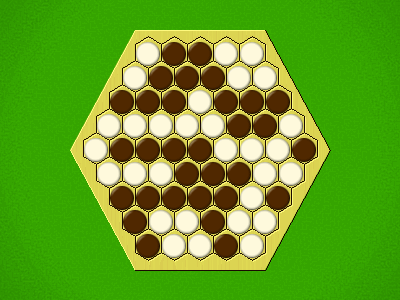 |
| i4-g6,e1-e2,f8-d8 | 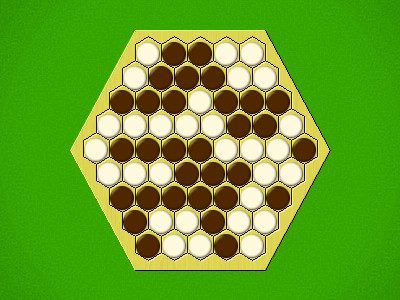 |
| e2-g2,e3-h3,h6-g6 |  |
| f5-f7,g6-e8,d9-e8 | 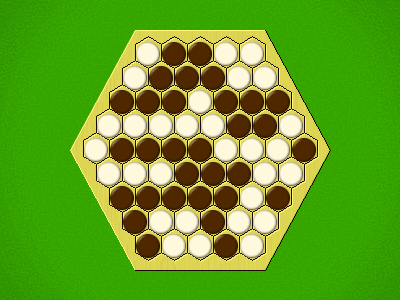 |
| g1-e3,a7-b6,a6-b6 |  |
| h6-g6,e3-h3,e2-g2 | 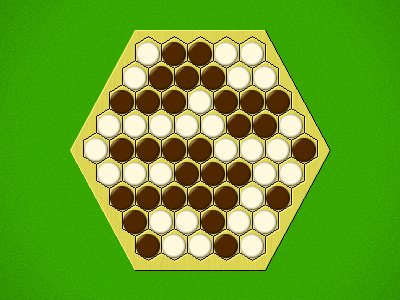 |
| d9-f7,e5-h5 | 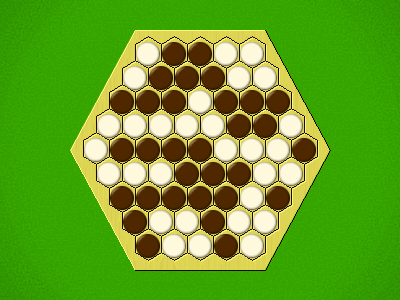 |
| d9-f7,g4-i4 |  |
| d9-f7,a7-a6 | 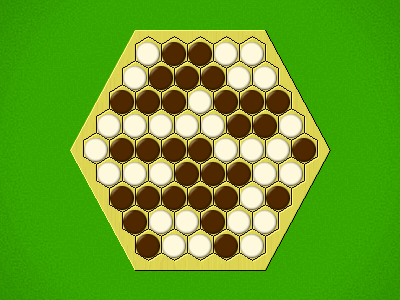 |
| i4-g4,a7-b6 | 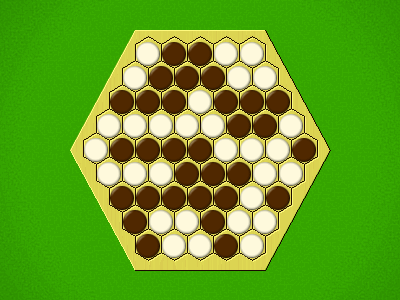 |
| e2-g2,e3-h3 | 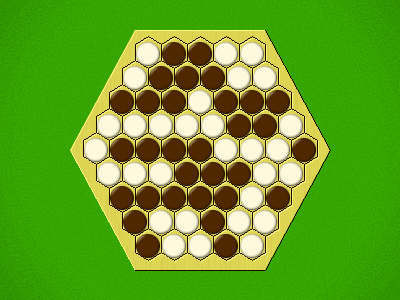 |
| h6-g6,h1-h2 |  |
| Puzzle | Solution |
|---|---|
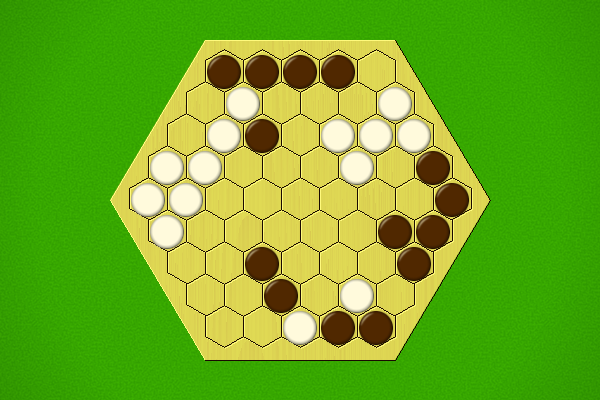 Black to win in 13 moves | |
 White to win in 13 moves | |
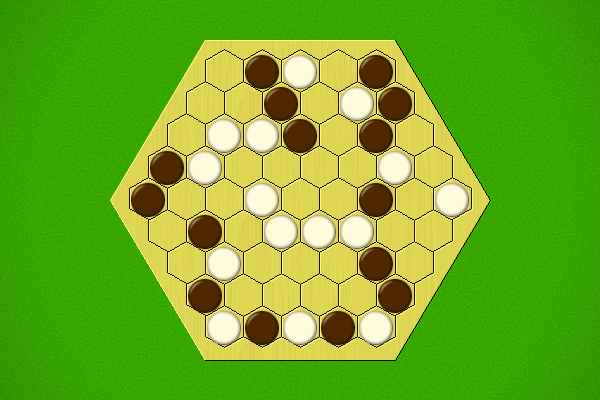 Black to win in 13 moves | |
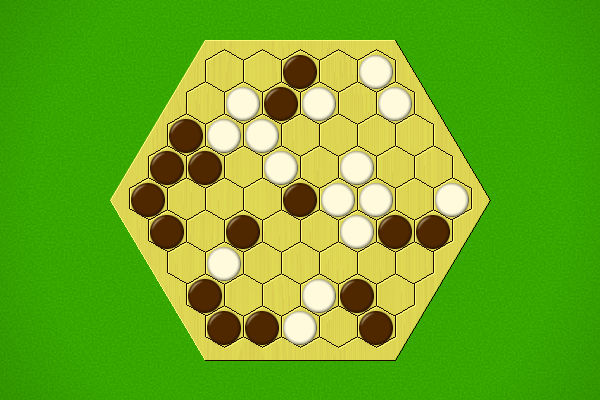 White to win in 13 moves | |
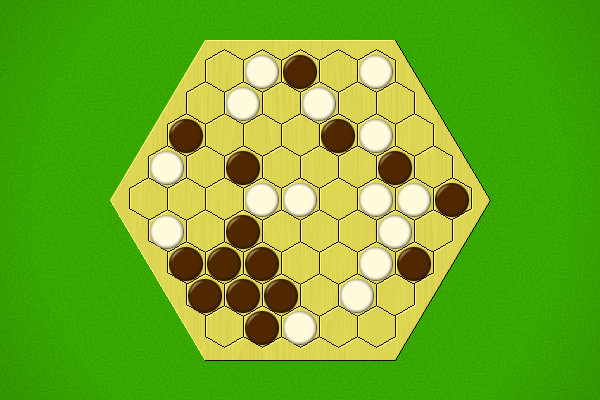 Black to win in 13 moves | |
 Black to win in 13 moves | |
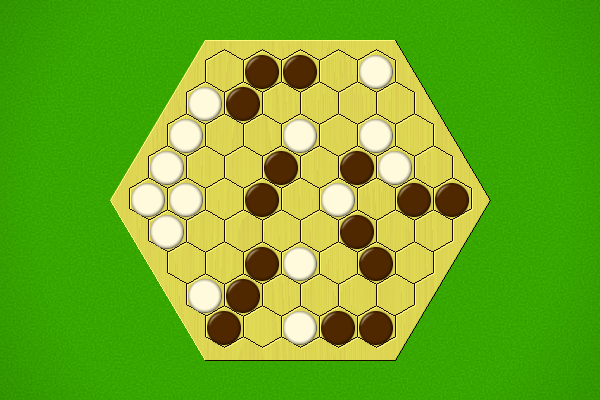 White to win in 11 moves | |
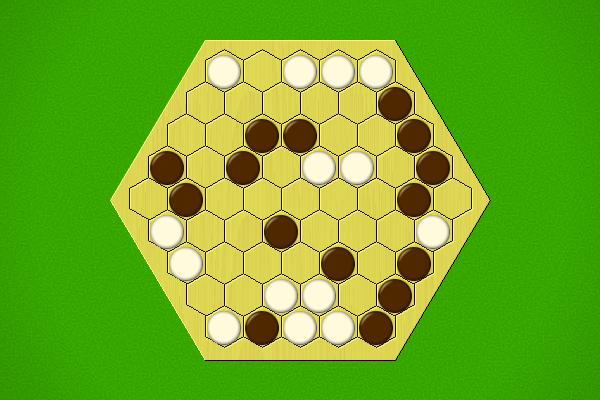 White to win in 11 moves | |
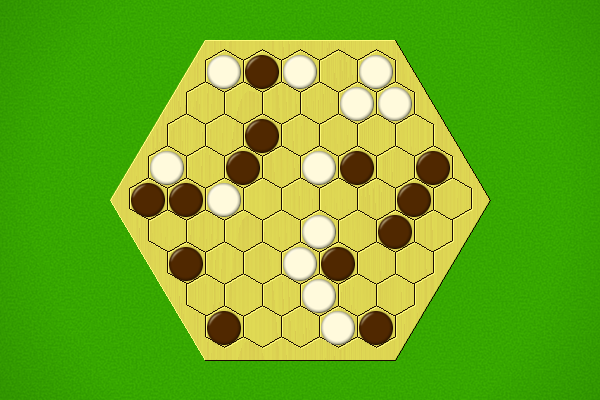 White to win in 7 moves | |
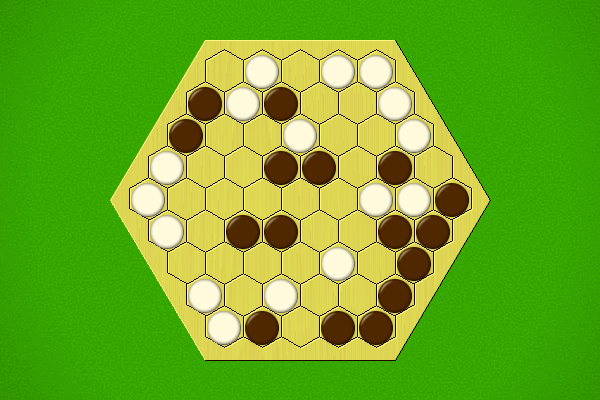 Black to win in 11 moves | |
 Black to win in 7 moves | |
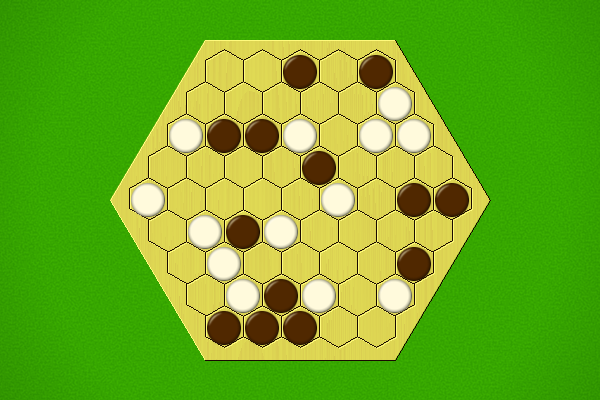 Black to win in 9 moves |
Selection criteria: first move must be unique, and not forced to avoid losing. Beyond that, Puzzles will be rated by the product of [total move]/[best moves] at each step, and the best puzzles selected.